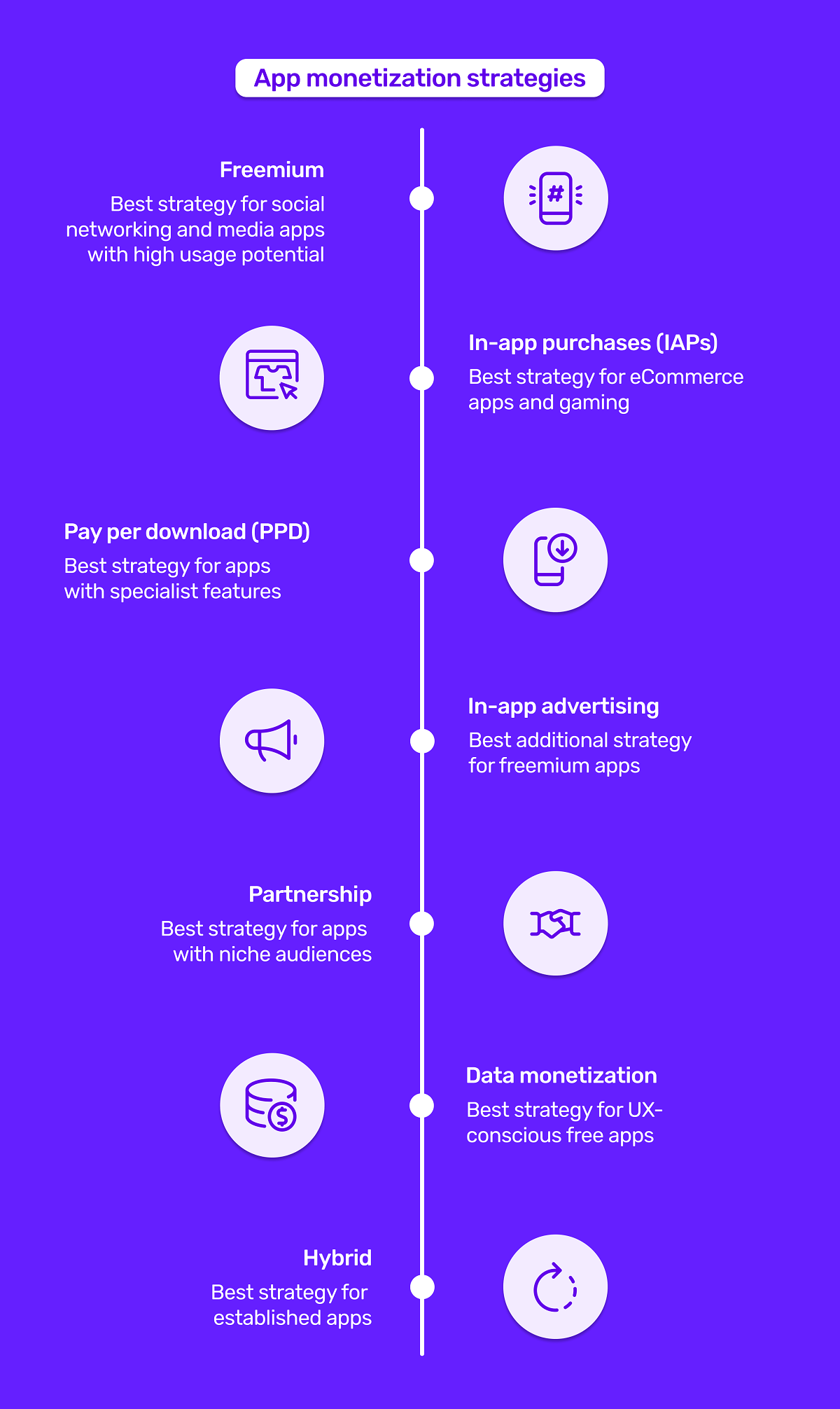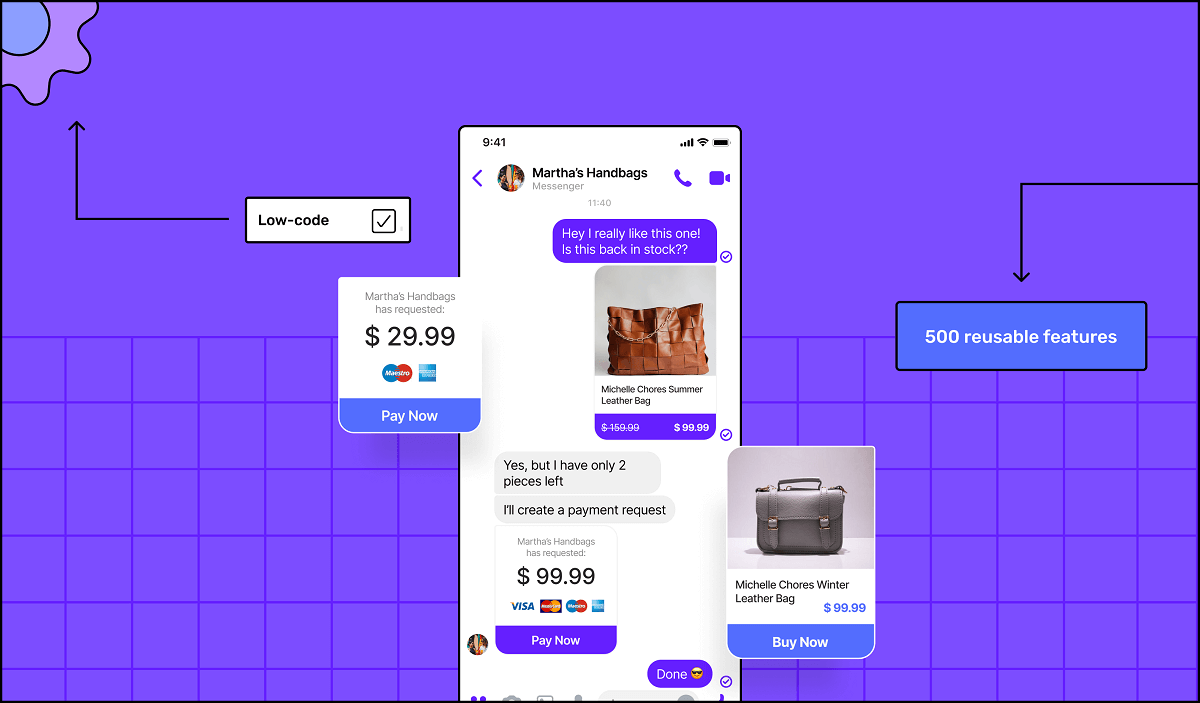As the legendary boxer Mike Tyson once said: "Everyone has a plan—until they get punched in the face."
In the world of software development, this sentiment holds true, especially when building a new app.
And one of the best ways to deal with the barrage of left hooks, jabs and uppercuts you’re likely to face is to understand your competition in detail. To do that, you need to conduct an app competitive analysis.
This assesses your rivals’ app positioning as well as their marketing and pricing strategies, helping you learn from their strengths and capitalise on their weaknesses.
In this article, we’ll give you a step-by-step breakdown of this process to ensure you’re ready to go the full 12 rounds.
Ding ding 👇
What is an app competitive analysis?
An app competitive analysis is an evaluation of your competitors’ strengths and weaknesses, which allows you to identify gaps in the market and find product-market fit. It’s crucial to conduct competitive analyses both before and after you create an app.
This is because the framework allows you to keep a finger on the pulse of your competitors’ positioning, pricing, features and marketing strategies long after your app is launched on mobile app stores.
What are the key benefits of conducting an app competitive analysis?
Aside from eating away at your direct competitors’ profits and market share, there are a bunch more reasons why you should perform a competitor analysis for your business.
Check out all the key benefits below 👇
1 - Improving customer experience
You can analyse what your target audience is saying about your competitors by looking into their reviews and feedback.
This helps you learn from your competitors’ successes and failures and use that knowledge to make customer-centric improvements, ultimately enhancing their experience at every step of the journey.
2 - Staying ahead of the curve
Most industries are constantly evolving, and what works today might simply not work tomorrow.
Competitive analysis helps you adapt to new market trends and changing customer preferences.
This helps you inform the development of your own products by drilling into what customers are searching for and what they value the most.
3 - Benchmarking your performance
Every business likes to think they’re the latest and greatest until competition hits them with reality. Competitor analysis enables you to analyse the performance of your competitors by looking at key metrics.
This helps you compare your performance with your competitors, identify areas for improvement and create realistic business objectives.
4 - Discovering your USP
Don’t think of competitors only as a threat, as they’re your greatest teachers. By evaluating their features and pricing strategies, you can identify what sets your app apart.
You can discover your unique selling propositions, which you might have missed and market them to attract customers.
5 - Optimising your marketing efforts
For most app businesses, marketing budgets are stretched, as most of your kitty goes towards app development and everyday operations.
Competitive analysis helps you understand your competitors’ app marketing strategies and find weak spots in their approach. It also enables you to allocate your budget more wisely and target the right channel so that you can gain maximum ROI.
6 steps to conducting a comprehensive competitive analysis
Before jumping into the steps, it’s worth making a note of something:
The idea of an app competitive analysis isn’t to divert your focus awayfrom your goals. It’s a framework that allows you to find concrete evidence to supportthem.
Here’s how you can use your findings in a clear and common sense way that doesn’t lead to overthinking 👇
1 - Find the right competitors
You want to do a competitive analysis, so you obviously know who your top competitors are, right? I’d say look again, closely.
You want at least five players (no more than 10) from your niche whom you’re up against to have a comprehensive look at the competitive landscape.
To find the right competitors, you should always ask yourself:
- Who are your direct competitors (the apps that have products and target audiences that are similar to yours)?
- Who are your indirect competitors(the apps that don’t have similar products but are still competing for the same target audience)?
- Which apps show up for similar keyword searches in app stores?
To find the right competitors, find where your target audience is. Look out for apps that are vying for the same customers, even if they aren’t necessarily selling the same stuff as you.
2 - Collect your competitor’s information
Now that you know whom to spy on, let’s gather some intel.
In this step, you want to get as much information as possible on your competitor’s market positioning and study their unique value offering. Simply put, the main aim of this step is to find out what makes your competitors appealing to your customers.
Start by analysing customer reviews, feedback and complaints about your competitors' products/services. Look for recurring themes or pain points that are consistently mentioned.
Use this information to understand what your own customers might value or dislike and how you can make your offering more appealing than theirs.
In the meantime, try to obtain their key app metrics, like annual profit, retention rates, total downloads and response time. This allows you to benchmark your performance against the market.
3 - Evaluate their marketing strategies
Now it’s time to review how your competitors build buzz about their apps.
Start by looking at how they position themselves on app stores. You can do this by assessing the overall clarity of their app description and how well the messaging works with the usage of their app. Also, deep dive into their app store optimization (ASO) strategy by taking note of the keywords they target and their app store rankings, as well as the type and relevance of content on their website.
Your next step is to figure out the social media platforms they’re active on. Here, look out for patterns in how often they post, the general theme of the messaging and how many interactions they have. Dig into the comments and look out for both positive and negative reviews.
You should also scrutinise their paid advertisements, look out for their sponsored content and pay-per-click (PPC) campaigns. While it’s impossible to get their exact figures, try to estimate their advertising budget based on the frequency and placement of ads.
Also, while you’re at it, do subscribe to their email list and evaluate what’s hitting your inbox. Analyse the content and frequency of their emails and what CRM they use for personalised email campaigns.
All of this will help you identify the chinks in their armour and will help you gain an advantage in marketing your own app.
4 - Analyse their revenue model
Want to know a major power play guaranteed to turn customers’ heads and get rivals scrambling? Undercut their pricing or offer a more convenient, transparent payment model.
To do this, you must know the revenue model of your competitors. To find out how they earn, you should ask yourself:
- What pricing structure do they use? Is it a one-time purchase model, a subscription-based model or a free-to-use model?
- For in-app purchases, is there a clear incentive for users to upgrade to a premium version?
- For subscriptions, how is the pricing structured for different subscription levels? And are there any benefits for long-term subscribers?
- Do they have partnerships that contribute to their revenue?
- Does their app sell data to third parties?
Reviewing your competitors' pricing strategies and revenue models will help you find the best monetization strategies you can use to have a much better price structure.
Listed below are the best app monetization strategies out there 👇
5 - Do a feature comparison
Even if you’re the most cost-effective option available in the market, the features and functionalities of your app determine if your customers are able to solve their problems effectively or not.
To conduct a feature comparison, you need to evaluate the entire customer journey your competitors provide, from the initial onboarding to the checkout process. This will provide you with valuable insights to modify your own app's development and strategy.
To do an effective feature comparison, look at the following areas 👇

Don’t limit this comparison to features; go the extra mile and compare your app with ongoing support and beyond. Compare it to your own customer success strategies and identify areas where your competitors excel and areas where you can provide a better experience.
6 - Conduct a competitor app SWOT analysis
Whatever you’ve learned about your competitors, put everything into perspective by conducting a competitor app SWOT analysis.
Ask yourself what your competitors’ strengths and weaknesses are, the potential opportunities available to them and the external threats to their business.
By conducting an app SWOT analysis of your competitors, you can prioritise areas for improvement and allocate resources where they’ll have the greatest impact and gain a competitive advantage.
Ultimately, SWOT analysis gives you a structured framework so that you can implement the right changes to your app in a timely manner.
A pro tip here would be to share your findings and analysis with your sales and marketing teams. The insights from competitive analysis can guide sales strategies and help marketing teams create more compelling messages that resonate with customers.
4 common mistakes to avoid while conducting competitor analysis
If you really want to learn from and adapt to your competitor’s flaws, you need to be on top of your game while conducting competitive analysis.
Avoid these mistakes to ensure that your analysis is accurate and yields results 👇
1 - Not setting clear objectives
Competitor analysis can easily overwhelm you with what you’re doing and may divert your attention from what’s important.
You don’t want to be chasing the ghost and trying different things that may not go well with your target audience, as this can easily backfire.
The ultimate goal of a competitive analysis is to solve your business problems, not increase them. Therefore, you need to set clear objectives for the results you want to achieve.
A top tip here would be to keep your customers at the centre of your goal-setting and analysis. Ensure that your strategies and improvements are aimed at better serving their needs and addressing pain points effectively.
2 - Limiting the number of competitors
Narrowly concentrating on two or three direct competitors is the biggest mistake you can make while conducting a competitive analysis.
Yes, direct competitors are the biggest threat, but you don’t want your business to suffer from market myopia, where you look at a few players so hard that you forget the whole industry.
To stay ahead of the competition, you want to consider both direct and indirect players and look at the broader market dynamics.
3 - Narrow focus on features
While developing a new app, it’s easy to get fixated on comparing the features of your app to those of your competition.
But you need to remember that comparing features, albeit important, is only one part of conducting a competitive analysis.
An app doesn’t succeed because it has a gazillion features. It becomes successful because it has a customer-centric approach, has a seamless user experience, markets itself as a thought leader to its target audience, provides value in terms of product-price offering, adapts to new user trends, provides good performance and much more.
A hard focus on features can check all the boxes but might fail to deliver on user expectations and needs.
4 - Not monitoring continuously
The competitive landscape is ever-evolving and staying ahead of everyone on the market requires constant attention.
There’s a good chance that your competition will catch you off guard if you don't continuously monitor.
To remain vigilant, you need to set up systems to regularly monitor your competitors and implement changes based on their analysis. This ongoing cycle of improvement ensures that your strategies remain relevant.
Conclusion
Myke Tyson became the greatest of all time because of his painstaking preparation for anything and everything that might happen in the ring.
When it comes to the competitive analysis of your app, you have to prepare for anything that might come along the way, because as soon as you move the goalposts, your competitors will react. And whether or not you can continuously monitor that change and adapt from there will determine your success.
Get a free app prototype now!
Bring your software to life in under 10 mins. Zero commitments.
Ridhima is the Global Head of Marketing at Builder.ai. With 16+ years of experience in delivering data-driven, strategic marketing campaigns, Ridhima’s innovative approach has accelerated growth within the marketing and content teams.













 Facebook
Facebook X
X LinkedIn
LinkedIn YouTube
YouTube Instagram
Instagram RSS
RSS


